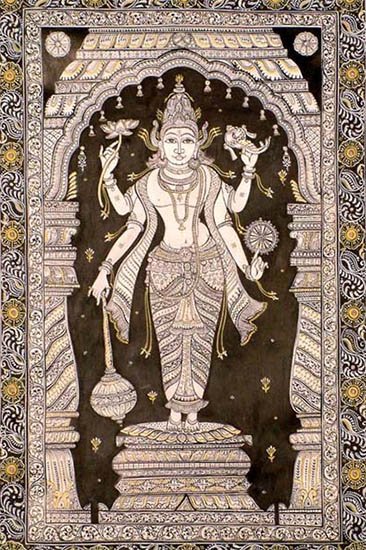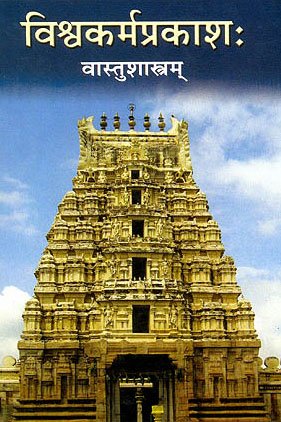Pratikrama: 10 definitions
Introduction:
Pratikrama means something in Hinduism, Sanskrit. If you want to know the exact meaning, history, etymology or English translation of this term then check out the descriptions on this page. Add your comment or reference to a book if you want to contribute to this summary article.
In Hinduism
Shilpashastra (iconography)
Source: Wisdom Library: Śilpa-śāstraPratikrama (उग्रबन्ध) refers to a variety of adhiṣṭhāna, which is a pedestal or base of a structure, and a very important component in the art of construction (śilpa). Pratikrama is mentioned in the Mānasāra (chapter 14) as having a further four sub-varieties. It is also mentioned in the Mayamata, the Kāśyapaśilpa, the Śilparatna (as krama) and the Vimānārcanakalpa.

Shilpashastra (शिल्पशास्त्र, śilpaśāstra) represents the ancient Indian science (shastra) of creative arts (shilpa) such as sculpture, iconography and painting. Closely related to Vastushastra (architecture), they often share the same literature.
Vastushastra (architecture)
Source: Shodhganga: Temples of Salem region Up to 1336 ADPratikrama (प्रतिक्रम).—A type of adhiṣṭhāna (‘pedestal’);—One type of pratikrama-adhiṣṭhāna is mentioned in Mayamata (verses 14-23-24), while Mānasāra (verses 14.22-23) mentions four types of pratikrama-adhiṣṭhāna. This division is again based on the height and number of upāṅgas the plinth possesses. Kāśyapaśilpa (verses 6.39-41) also makes a mention of this type of adhiṣṭhāna.
The major mouldings of this plinth are
- upāna,
- jagati,
- dhāravṛttakumuda,
- gala,
- and prati.
According to Mayamata, this plinth should be decorated with the carvings of elephants, makaras, vyālas etc, and this plinth is ideal for the house of gods. It also states that when the plinth is employed for the houses of brahmins and kings it should be decorated with foliage and creeper and such a plinth brings happiness and victory.

Vastushastra (वास्तुशास्त्र, vāstuśāstra) refers to the ancient Indian science (shastra) of architecture (vastu), dealing with topics such architecture, sculpture, town-building, fort building and various other constructions. Vastu also deals with the philosophy of the architectural relation with the cosmic universe.
Vyakarana (Sanskrit grammar)
Source: Wikisource: A dictionary of Sanskrit grammarPratikrama (प्रतिक्रम).—Recital in the reverse order as in some of the artificial recitations of the Samhita text such as जटा, घन (jaṭā, ghana) etc.

Vyakarana (व्याकरण, vyākaraṇa) refers to Sanskrit grammar and represents one of the six additional sciences (vedanga) to be studied along with the Vedas. Vyakarana concerns itself with the rules of Sanskrit grammar and linguistic analysis in order to establish the correct context of words and sentences.
Languages of India and abroad
Sanskrit dictionary
Source: DDSA: The practical Sanskrit-English dictionaryPratikrama (प्रतिक्रम).—Inverted order.
Derivable forms: pratikramaḥ (प्रतिक्रमः).
Source: Cologne Digital Sanskrit Dictionaries: Shabda-Sagara Sanskrit-English DictionaryPratikrama (प्रतिक्रम).—m.
(-maḥ) Inverted order.
Source: Cologne Digital Sanskrit Dictionaries: Cappeller Sanskrit-English DictionaryPratikrama (प्रतिक्रम).—[masculine] inverted order.
Source: Cologne Digital Sanskrit Dictionaries: Monier-Williams Sanskrit-English DictionaryPratikrama (प्रतिक्रम):—[=prati-krama] [from prati-kram] m. reversed or inverted order, [Pratāparudrīya]
Source: DDSA: Paia-sadda-mahannavo; a comprehensive Prakrit Hindi dictionary (S)Pratikrama (प्रतिक्रम) in the Sanskrit language is related to the Prakrit word: Paḍikkama.
[Sanskrit to German]
Sanskrit, also spelled संस्कृतम् (saṃskṛtam), is an ancient language of India commonly seen as the grandmother of the Indo-European language family (even English!). Closely allied with Prakrit and Pali, Sanskrit is more exhaustive in both grammar and terms and has the most extensive collection of literature in the world, greatly surpassing its sister-languages Greek and Latin.
See also (Relevant definitions)
Partial matches: Krama, Prati.
Starts with: Pratikramaka, Pratikramana, Pratikramanasutra, Pratikramanavidhi, Pratikramati.
Full-text: Padikkama.
Relevant text
Search found 3 books and stories containing Pratikrama, Prati-krama; (plurals include: Pratikramas, kramas). You can also click to the full overview containing English textual excerpts. Below are direct links for the most relevant articles:
Vastu-shastra (5): Temple Architecture (by D. N. Shukla)
Samarangana-sutradhara (Summary) (by D. N. Shukla)
Manasara (English translation) (by Prasanna Kumar Acharya)